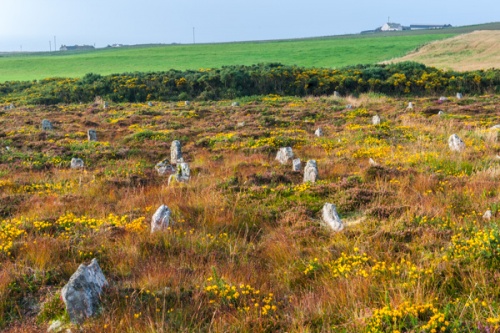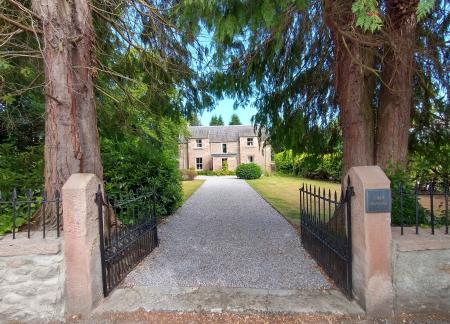
The individual stones are not terribly impressive; the largest does not reach 1 metre in height. What is impressive, however, is the sheer number of stones in one location. There are over 200 stones still standing, and estimates suggest that there may originally have been over 600 stones on the site.
Even if the purpose was to create an observatory, it is puzzling that so many stones were needed. And that is part of what makes the Hill o' Many Stanes so appealing - the mystery of its purpose! Some archaeologists think that successive generations of local families added to the rows over time.
They were likely erected around 4000 years ago, and though there have been no burials found here, similar sites in other Scottish locations seem to have been linked to burials. According to local folklore, a farmer once took one of the stones to build a kiln, but it burst into flames, so the terrified farmer returned it to its original location!

Visiting
The Hill o' Many Stanes is well signposted off the A9 at Mid Clyth. A short drive brings you to a very small layby on the left with room for only a couple of vehicles. From there it is only a matter of a few steps to reach the crest of the hill, and see the stones spread out below you. There is an information panel, but one thing missing from it is a clear plan of the site layout.
It isn't immediately obvious just how the stones rows are arranged, and I wandered around the site for 5 minutes, circling the perimeter path and puzzling over what I was seeing, before the layout 'clicked' in my head and I could see how the rows form a fan shape, closer at the top of the hill and spreading out down the slope.
The location is wonderful, but it doesn't seem as if the stone rows would have been visible from far away. For one thing, the stones are quite small, as mentioned, and for another, the rows spread out down the slope rather than standing in plain view on the crest of the hill. All of which begs the question; what did it all mean? Why build the stone rows here, and why in the fan shape? That's part of the appeal of the Hill o' Many Stanes; it is a bit of a mystery!


easier to follow!
 We've 'tagged' this attraction information to help you find related historic attractions and learn more about major time periods mentioned.
We've 'tagged' this attraction information to help you find related historic attractions and learn more about major time periods mentioned.




